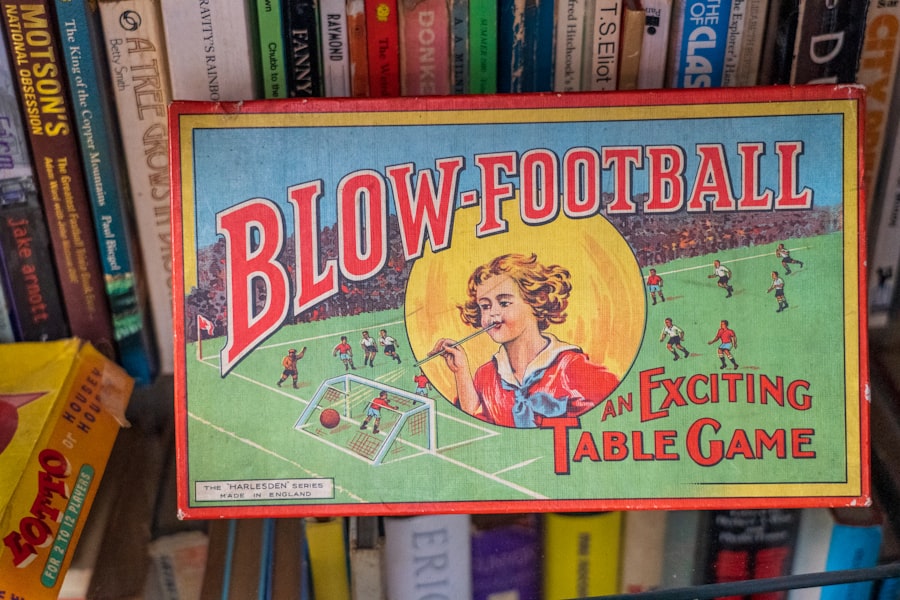The marketing landscape of football has undergone a remarkable transformation over the decades, evolving from rudimentary promotional efforts to a sophisticated, multi-faceted industry. In the early days of the sport, marketing was largely limited to local advertisements and word-of-mouth promotions. Clubs relied on community engagement and grassroots initiatives to attract fans, often focusing on match-day experiences and local rivalries.
The advent of radio and television in the mid-20th century marked a significant turning point, as clubs began to realize the potential of broadcasting to reach wider audiences. This shift not only increased visibility but also laid the groundwork for future commercial opportunities. As football gained global popularity, particularly during the 1990s and 2000s, marketing strategies became more complex and data-driven.
The introduction of the Premier League in England in 1992 exemplified this shift, as clubs began to leverage television rights deals to generate substantial revenue. The influx of money from broadcasting rights allowed clubs to invest in better facilities, player acquisitions, and marketing campaigns. This era also saw the rise of digital marketing, with clubs establishing their online presence through websites and social media platforms.
The ability to engage with fans directly through these channels revolutionized how clubs marketed themselves, allowing for targeted campaigns that could resonate with diverse audiences across the globe.
Key Takeaways
- Football marketing has evolved significantly, integrating modern strategies and technologies.
- Sponsorship deals play a crucial role in the financial stability and growth of football clubs.
- Social media platforms are essential tools for engaging fans and promoting football brands.
- Player endorsements greatly enhance club and brand visibility worldwide.
- Fan engagement and merchandising are key drivers of revenue and club loyalty.
The Influence of Sponsorship Deals on Football Clubs
Sponsorship deals have become a cornerstone of football marketing, significantly influencing the financial landscape of clubs. These agreements often involve brands paying substantial sums to have their logos displayed on team kits, stadiums, and promotional materials. For instance, Manchester United’s long-standing partnership with Adidas, which began in 2015, is one of the most lucrative in sports history, reportedly worth over £750 million over ten years.
Such deals not only provide clubs with essential revenue streams but also enhance their global visibility through association with well-known brands. Moreover, sponsorship deals extend beyond mere financial transactions; they often shape a club’s identity and market positioning. For example, FC Barcelona’s partnership with Rakuten has allowed the club to align itself with a leading global technology company, enhancing its image as an innovative and forward-thinking organization.
This strategic alignment can attract new fans and create additional marketing opportunities, such as co-branded campaigns and events. As clubs continue to seek out lucrative sponsorships, the competition for partnerships has intensified, leading to more creative and engaging collaborations that benefit both parties involved.
The Role of Social Media in Football Marketing

Social media has revolutionized football marketing by providing clubs with direct access to their fan base and enabling real-time engagement. Platforms like Twitter, Instagram, and Facebook allow clubs to share content instantly, fostering a sense of community among fans. For instance, Liverpool FC has effectively utilized social media to create a strong online presence, sharing behind-the-scenes content, player interviews, and match highlights that resonate with their global fan base.
This approach not only keeps fans engaged but also encourages them to share content within their networks, amplifying the club’s reach. Additionally, social media serves as a powerful tool for driving merchandise sales and promoting events. Clubs can launch targeted advertising campaigns that reach specific demographics based on user data, ensuring that promotional efforts are both efficient and effective.
For example, during major tournaments like the FIFA World Cup or UEFA Champions League, clubs often ramp up their social media activity to capitalize on heightened interest in football. By leveraging hashtags, engaging with fans through polls or contests, and collaborating with influencers, clubs can create buzz around their brand and drive traffic to their online stores.
The Impact of Player Endorsements on Branding
| Metric | Description | Impact on Branding | Example |
|---|---|---|---|
| Brand Awareness | Increase in recognition and recall of the brand | Endorsements by popular players can boost brand visibility by up to 40% | Michael Jordan’s association with Nike |
| Consumer Trust | Level of trust consumers place in the brand | Player endorsements can increase trust scores by 25% | Serena Williams endorsing Wilson tennis rackets |
| Sales Growth | Increase in product sales following endorsement | Sales can rise by 15-30% after endorsement campaigns | Roger Federer and Rolex watch sales |
| Social Media Engagement | Likes, shares, comments related to endorsement content | Engagement rates can increase by 50% with player endorsements | Lionel Messi’s posts promoting Adidas |
| Brand Loyalty | Repeat purchase behavior influenced by endorsements | Endorsements can improve loyalty metrics by 20% | LeBron James and Nike’s loyal customer base |
Player endorsements play a pivotal role in shaping a club’s brand identity and enhancing its marketability. Star players often serve as ambassadors for both their clubs and the brands they represent, creating a powerful synergy that can elevate a club’s profile. For instance, Cristiano Ronaldo’s association with Juventus has not only boosted the club’s visibility but has also led to increased merchandise sales and social media engagement.
His global appeal allows Juventus to tap into new markets and attract fans who may not have previously followed the club. Furthermore, player endorsements can influence consumer behavior significantly. When a high-profile athlete endorses a product or service, it often lends credibility and desirability to that brand.
For example, Lionel Messi’s long-standing partnership with Adidas has not only solidified his status as a football icon but has also reinforced Adidas’s position as a leading sportswear brand. This relationship exemplifies how player endorsements can create a mutually beneficial dynamic that enhances both the player’s brand and the club’s marketability.
The Effect of Merchandising on Football Clubs
Merchandising is a critical component of football marketing that directly impacts a club’s revenue and brand loyalty. The sale of jerseys, apparel, and other merchandise generates significant income for clubs while simultaneously fostering a sense of belonging among fans. For example, Bayern Munich reported record merchandise sales following their successful seasons in recent years, demonstrating how on-field success can translate into financial gains off the pitch.
The design and quality of merchandise also play a crucial role; clubs that invest in stylish and high-quality products are more likely to attract fans willing to spend on official gear. Moreover, merchandising strategies have evolved with changing consumer preferences. Clubs are increasingly focusing on creating unique and limited-edition items that appeal to collectors and dedicated fans.
For instance, Manchester City has launched various collaborations with fashion brands to produce exclusive merchandise that resonates with younger audiences. This approach not only diversifies revenue streams but also enhances the club’s image as a modern and trend-conscious organization.
The Importance of Fan Engagement in Football Marketing

Fan engagement is at the heart of successful football marketing strategies. Clubs that prioritize building strong relationships with their supporters are more likely to cultivate loyalty and drive long-term success. Engaging fans goes beyond traditional marketing tactics; it involves creating meaningful experiences that resonate emotionally with supporters.
For example, many clubs now host fan events, such as meet-and-greets with players or open training sessions, allowing fans to connect with their favorite teams on a personal level. Digital platforms have also transformed fan engagement by enabling clubs to interact with supporters in real time. Initiatives like live Q&A sessions with players or interactive polls on social media allow fans to feel involved in the club’s decision-making processes.
This level of engagement fosters a sense of community among supporters and encourages them to advocate for the club within their networks. As clubs continue to explore innovative ways to engage fans, those that succeed will likely see increased loyalty and support both on match days and beyond.
The Globalization of Football Marketing
The globalization of football marketing has opened up new avenues for clubs to expand their reach and tap into international markets. As football continues to grow in popularity worldwide, clubs are increasingly looking beyond their domestic fan bases to attract supporters from diverse regions. This trend is exemplified by clubs like Real Madrid and Barcelona, which have established extensive global fan networks through international tours and partnerships with local organizations.
Moreover, broadcasting rights deals have played a significant role in this globalization process. Major leagues like the English Premier League have secured lucrative contracts that allow matches to be broadcasted in countries around the world, further increasing the sport’s visibility. This international exposure not only benefits clubs financially but also creates opportunities for cross-cultural engagement with fans from different backgrounds.
As clubs navigate this global landscape, they must adapt their marketing strategies to resonate with diverse audiences while maintaining their unique identities.
The Future of Marketing in Football
Looking ahead, the future of marketing in football is poised for further evolution driven by technological advancements and changing consumer behaviors. The rise of artificial intelligence (AI) and data analytics is set to revolutionize how clubs approach marketing strategies. By leveraging data insights, clubs can create highly personalized marketing campaigns that cater to individual fan preferences and behaviors.
This level of customization will enhance fan experiences and drive engagement across various platforms. Additionally, sustainability is becoming an increasingly important consideration in football marketing. As fans become more environmentally conscious, clubs are recognizing the need to align their branding efforts with sustainable practices.
Initiatives such as eco-friendly merchandise production or community outreach programs focused on environmental awareness can enhance a club’s reputation while appealing to socially responsible consumers. In conclusion, as football continues to evolve as a global phenomenon, so too will its marketing strategies. Clubs that embrace innovation while staying true to their core values will be best positioned to thrive in this dynamic landscape.



